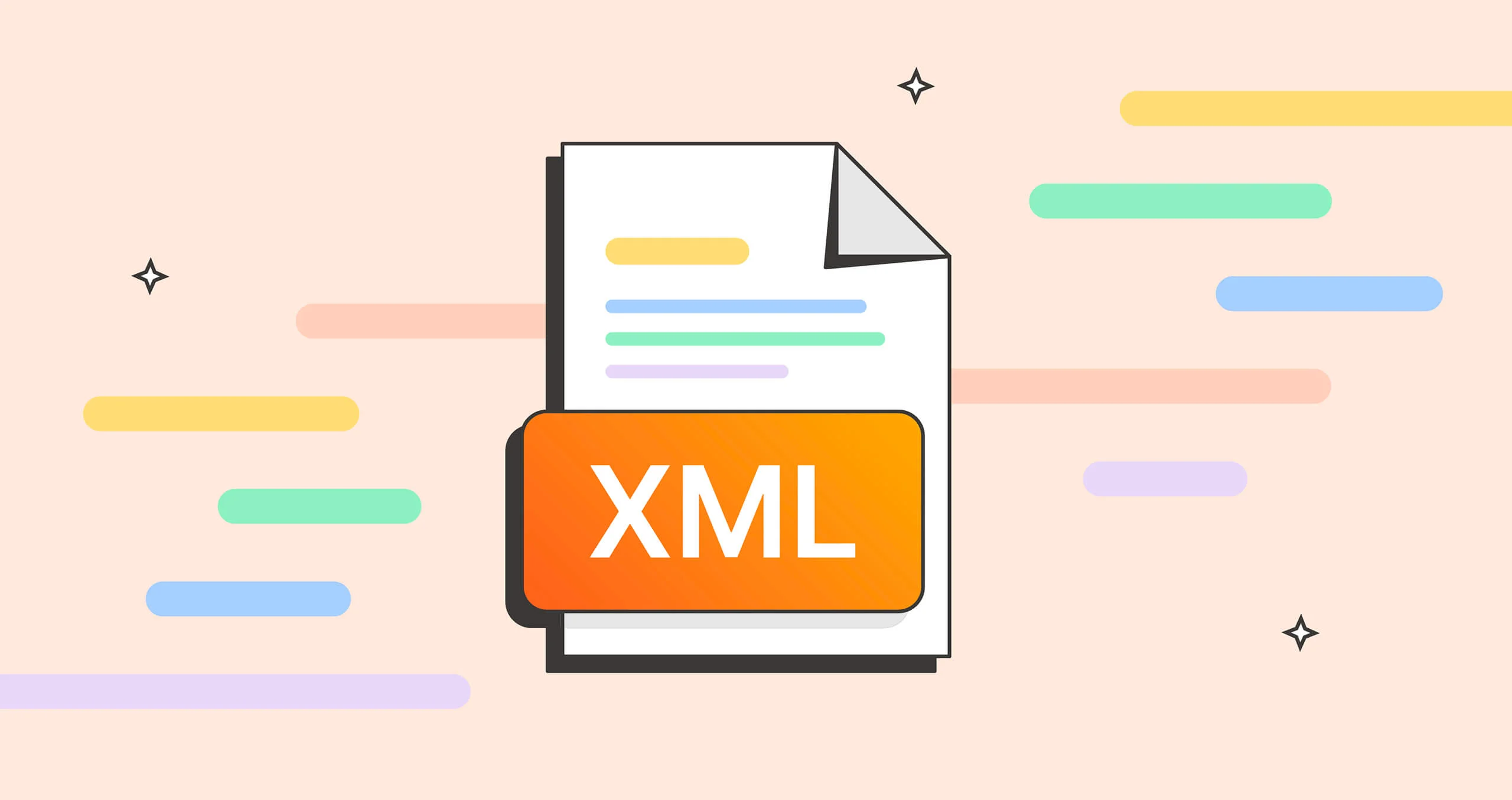The Anatomy of an RSS Feed: Essential Tags Explained
An RSS feed is structured using standardized XML tags to deliver content updates reliably. 1. The <rss> tag is the root container, defining the version (e.g., "2.0"). 2. Inside it, the <channel> tag acts as the main hub, holding metadata and content. 3. Core metadata includes <title>, <link>, <description>, <language>,

An RSS feed might look like a jumble of XML at first glance, but it’s actually a well-structured format designed to deliver content updates in a standardized way. Understanding its core components helps developers, content creators, and tech-savvy users make the most of syndicated content. Here’s a breakdown of the essential tags in a typical RSS feed and what they do.

<rss></rss> — The Root Container
Every RSS feed starts with the <rss></rss> tag, which acts as the outermost wrapper. It usually includes a version attribute to specify which version of the RSS specification is being used—most commonly:
<rss version="2.0">
This tag encloses everything else in the feed. Without it, the document isn’t valid RSS.

<channel> — The Main Content Hub
Inside <rss>, you’ll find exactly one <channel> element. This represents the source of the content—like a blog or podcast—and contains metadata about it. All items (i.e., individual posts or episodes) are listed within this channel.
Key things defined in <channel>:
- Title, link, and description — Basic info about the feed.
- Metadata — Language, copyright, update frequency, etc.
- Items — The actual content entries.
Think of <channel> as the “homepage” of your feed.
Core Channel Metadata Tags
These tags live inside <channel> and describe the feed itself:
<title>
The name of the feed (e.g., “Tech News Daily”).<link>
The URL to the website associated with the feed (e.g.,https://example.com).<description>
A short summary of what the feed is about.<language>
The primary language of the content (e.g.,en-us).<lastBuildDate>
Timestamp of when the feed was last updated (in RFC 822 format).<pubDate>
When the feed was originally published.<generator>
Software used to create the feed (e.g., “WordPress 6.5”).<image>
Optional. Includes sub-tags like<url>,<title>, and<link>to display a logo or icon in feed readers.
<item> — Individual Content Entries
Each post, article, or episode is wrapped in an <item> tag. Multiple items can appear in a single channel, typically listed in reverse chronological order (newest first).
Common tags inside <item>:
<title>
Headline of the item.<link>
Direct URL to the full content online.<description>
Summary or full body of the content (can include HTML).<pubDate>
Publication date of the item (RFC 822 format).<guid>
Globally Unique Identifier — A unique string (often a URL) to prevent duplicates. Important for feed readers to track what’s new.<author>
Email address and/or name of the author (format:john@example.com (John Doe)).<category>
One or more tags or topics for the item.<enclosure>
Used for multimedia (e.g., podcasts). Specifies a file URL, size, and MIME type:<enclosure url="https://example.com/episode1.mp3" length="12345678" type="audio/mpeg" />
Why These Tags Matter
- Consistency: Standard tags ensure compatibility across feed readers (like Feedly, Inoreader, or podcast apps).
- Discoverability: Proper metadata helps users find and understand your content.
-
Automation: Tools rely on
<guid>and<pubdate></pubdate>to detect updates and avoid duplicates. - Rich content: Enclosures and HTML descriptions enable media-rich feeds.
Basically, an RSS feed is a simple but powerful structure. As long as you’ve got the right tags in place—
<channel>for context,<item>for content, and key metadata for clarity—your feed will work reliably across platforms. It’s not flashy, but it’s built to last.The above is the detailed content of The Anatomy of an RSS Feed: Essential Tags Explained. For more information, please follow other related articles on the PHP Chinese website!

Hot AI Tools

Undress AI Tool
Undress images for free

Undresser.AI Undress
AI-powered app for creating realistic nude photos

AI Clothes Remover
Online AI tool for removing clothes from photos.

Clothoff.io
AI clothes remover

Video Face Swap
Swap faces in any video effortlessly with our completely free AI face swap tool!

Hot Article

Hot Tools

Notepad++7.3.1
Easy-to-use and free code editor

SublimeText3 Chinese version
Chinese version, very easy to use

Zend Studio 13.0.1
Powerful PHP integrated development environment

Dreamweaver CS6
Visual web development tools

SublimeText3 Mac version
God-level code editing software (SublimeText3)
 The Complete Guide to Creating a Podcast RSS Feed with iTunes Tags
Aug 11, 2025 pm 02:09 PM
The Complete Guide to Creating a Podcast RSS Feed with iTunes Tags
Aug 11, 2025 pm 02:09 PM
Creating a podcast containing the correct iTunes tags RSSfeed is the key to ensuring that the program can be discovered and displayed correctly on platforms such as ApplePodcasts; 2. RSSfeed must comply with the RSS2.0 specification and include specific iTunes tags, such as,,, and; 3. The xmlns:itunes namespace must be added to the tags, and metadata must be set correctly at the channel level and each episode level; 4. Use Buzzprout, Captivate, Podbean and other hosting platforms to automatically generate compliant feeds to avoid manual XML errors; 5. Before submission, you need to use verification tools to check the validity of the feed, ensure that the audio file is in MP3 format and use absolute URLs.
 Using XSLT Parameters to Create Dynamic Transformations
Aug 17, 2025 am 09:16 AM
Using XSLT Parameters to Create Dynamic Transformations
Aug 17, 2025 am 09:16 AM
XSLT parameters are a key mechanism for dynamic conversion through external passing values. 1. Use declared parameters and set default values; 2. Pass the actual value from application code (such as C#) through interfaces such as XsltArgumentList; 3. Control conditional processing, localization, data filtering or output format through $paramName reference parameters in the template; 4. Best practices include using meaningful names, providing default values, grouping related parameters, and performing value verification. The rational use of parameters can make XSLT style sheets highly reusable and maintainable, and the same style sheets can produce diversified output results based on different inputs.
 Displaying RSS feed items with images and media enclosures
Aug 01, 2025 am 12:33 AM
Displaying RSS feed items with images and media enclosures
Aug 01, 2025 am 12:33 AM
First, check the inline image in the description field of the RSS item, extract the img tag as the main image source by parsing HTML or CDATA content; 2. Secondly, find the media:thumbnail element in the MediaRSS extension, and give priority to using the thumbnail provided for preview display; 3. If the first two do not exist, check whether the MIME type of the enclosure tag is an image (such as image/jpeg) and use it as an alternative cover image; 4. For audio or video media, render the corresponding audio or video player according to the MIME type of enclosure (such as audio/mpeg or video/mp4); 5. When actually implementing it,
 XML Serialization and Deserialization in .NET
Aug 13, 2025 am 05:10 AM
XML Serialization and Deserialization in .NET
Aug 13, 2025 am 05:10 AM
XMLserializationin.NETconvertsobjectstoXMLformatusingXmlSerializer,anddeserializationreconstructsobjectsfromXML.1.UseXmlSerializertoserializepublicpropertiesandfields,asshownwiththePersonclass.2.DeserializebycallingDeserializemethodonXmlSerializer,pa
 XML Data Binding with Castor in Java
Aug 15, 2025 am 03:43 AM
XML Data Binding with Castor in Java
Aug 15, 2025 am 03:43 AM
CastorenablesXML-to-Javaobjectmappingviadefaultconventionsorexplicitmappingfiles;1)DefineJavaclasseswithgetters/setters;2)UseUnmarshallertoconvertXMLtoobjects;3)UseMarshallertoserializeobjectsbacktoXML;4)Forcomplexcases,configurefieldmappingsinmappin
 Best practices for commenting and documenting XML files
Aug 17, 2025 am 01:52 AM
Best practices for commenting and documenting XML files
Aug 17, 2025 am 01:52 AM
The clear answer is: Best practices for XML file annotations and documentation include using contextual comments, combining external documents, keeping comments updated, avoiding over-annotations, keeping comment styles consistent, adding units and scope descriptions to configuration values, and using CDATA if necessary. 1. Comments should explain the reasons behind the structure rather than just describe the content, such as explaining business rules or technical limitations; 2. Combining external documents such as XSD, DTD, or README to illustrate the overall structure, and refer to schema in the root element to support verification; 3. Comments are updated synchronously every time XML is modified to avoid legacy outdated information; 4. Add comments only in non-obvious places to avoid repeated explanations for obvious elements; 5. Teams unify comment location, format and keywords (such as TOD
 The Anatomy of an RSS Feed: Essential Tags Explained
Aug 07, 2025 am 12:46 AM
The Anatomy of an RSS Feed: Essential Tags Explained
Aug 07, 2025 am 12:46 AM
AnRSSfeedisstructuredusingstandardizedXMLtagstodelivercontentupdatesreliably.1.Thetagistherootcontainer,definingtheversion(e.g.,"2.0").2.Insideit,thetagactsasthemainhub,holdingmetadataandcontent.3.Coremetadataincludes,,,,,,,andoptional.4.Ea
 Fetching and Parsing an RSS Feed in JavaScript
Aug 04, 2025 am 03:08 AM
Fetching and Parsing an RSS Feed in JavaScript
Aug 04, 2025 am 03:08 AM
To solve the problem of getting and parsing RSSfeed in JavaScript, you must use a proxy to bypass CORS restrictions and parse XML with DOMParser. 1. Due to the cross-origin policy of the browser, it is impossible to directly obtain RSSfeed without CORS headers through fetch; 2. The solution is to use CORS proxy, and public proxy such as allorigins.win can be used during testing; 3. The production environment should use a self-built backend proxy to forward the request; 4. After obtaining XML text, use DOMParser to parse it into an XML document object; 5. Use querySelectorAll and querySelector to extract the title, link, and publish time in the item







